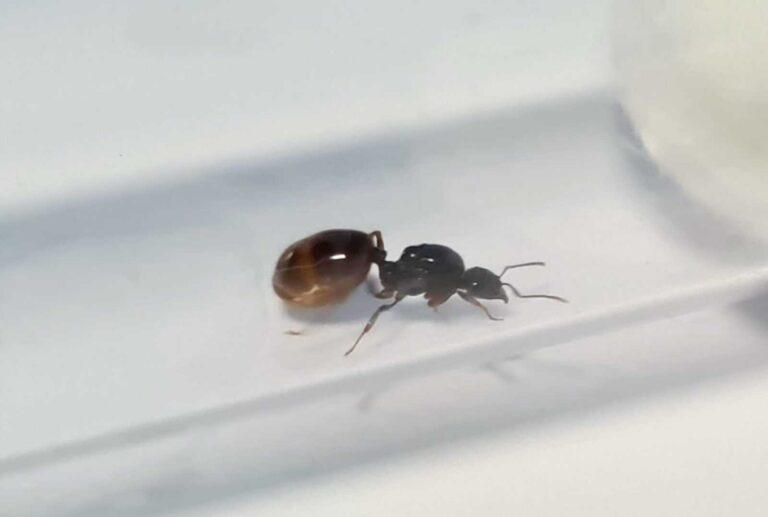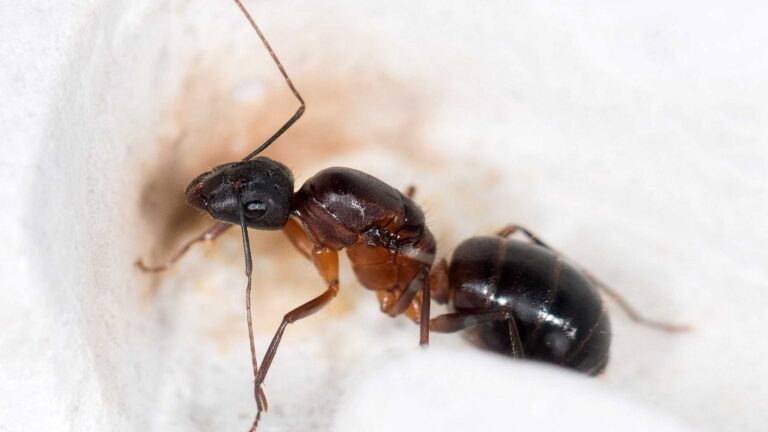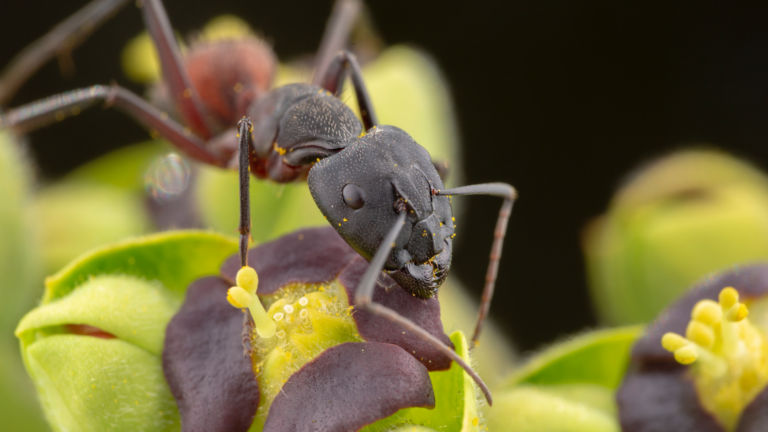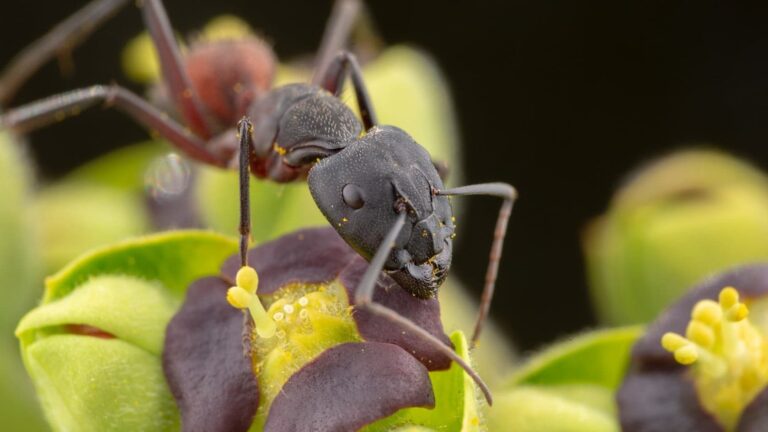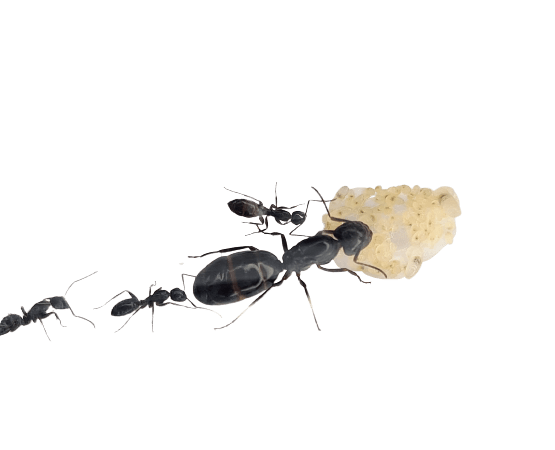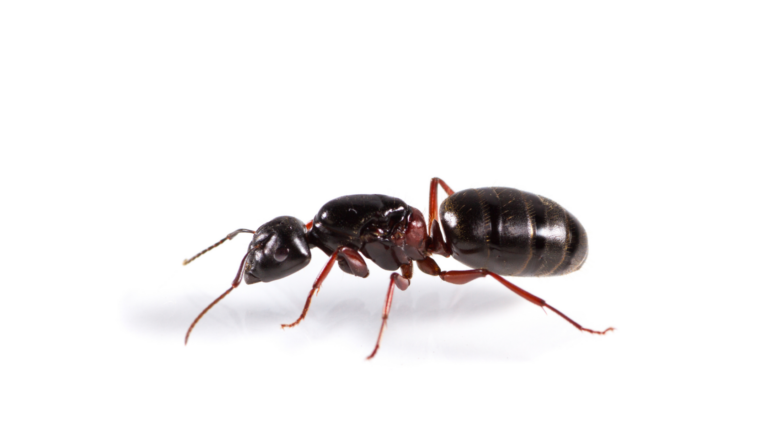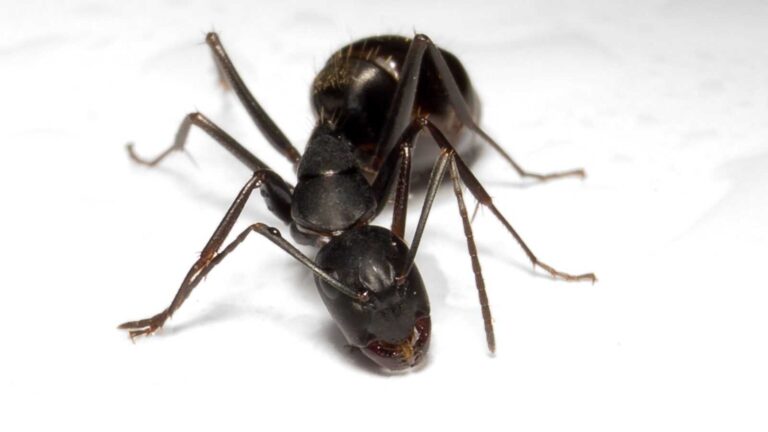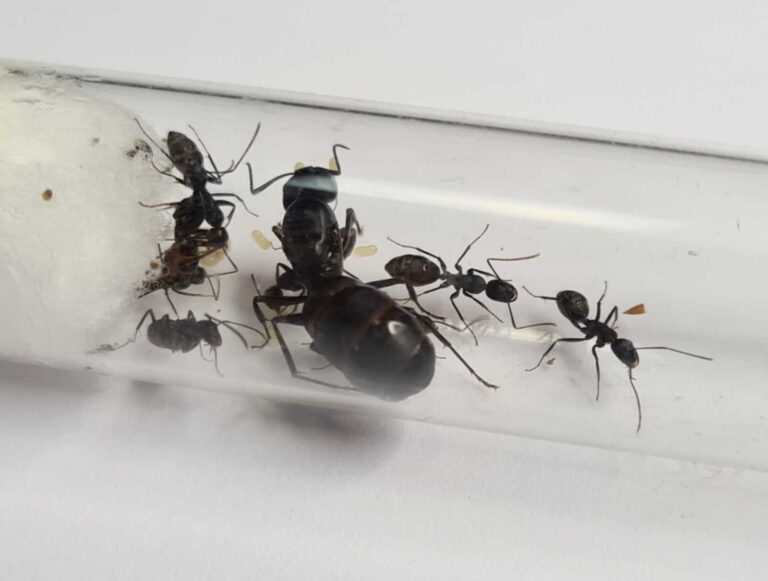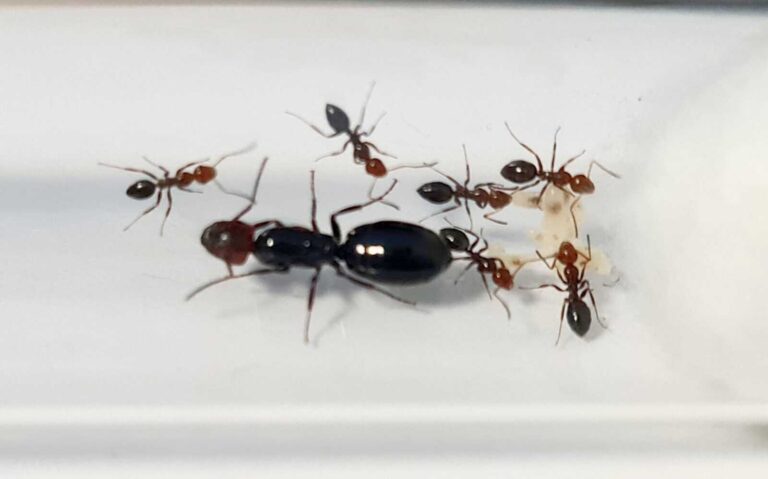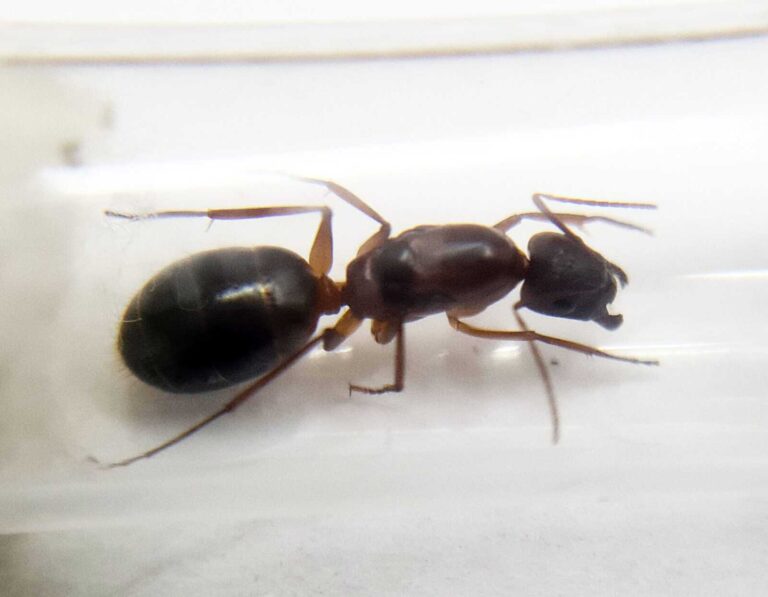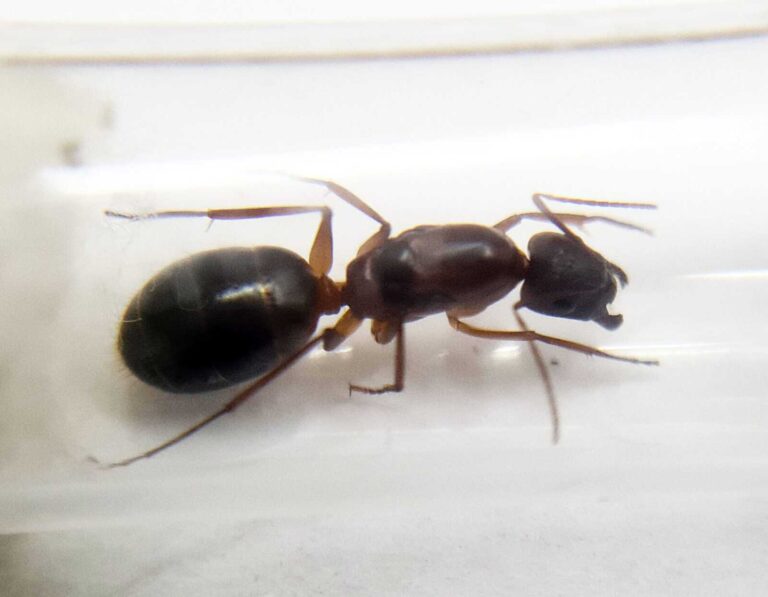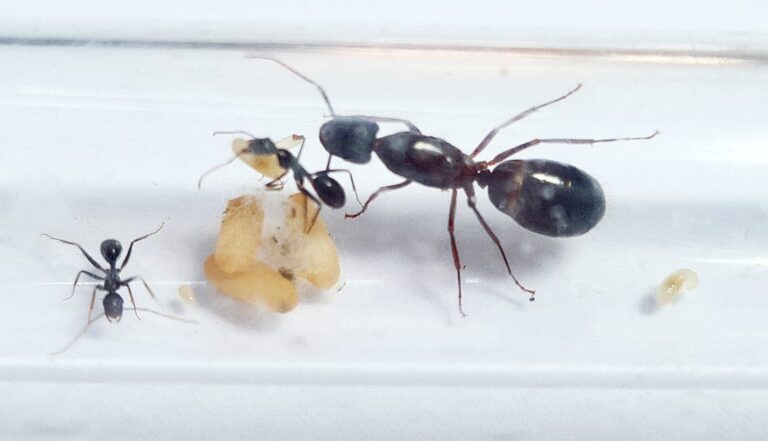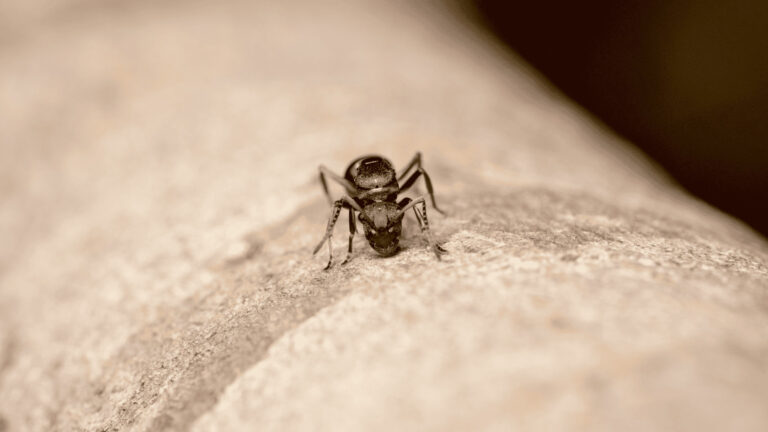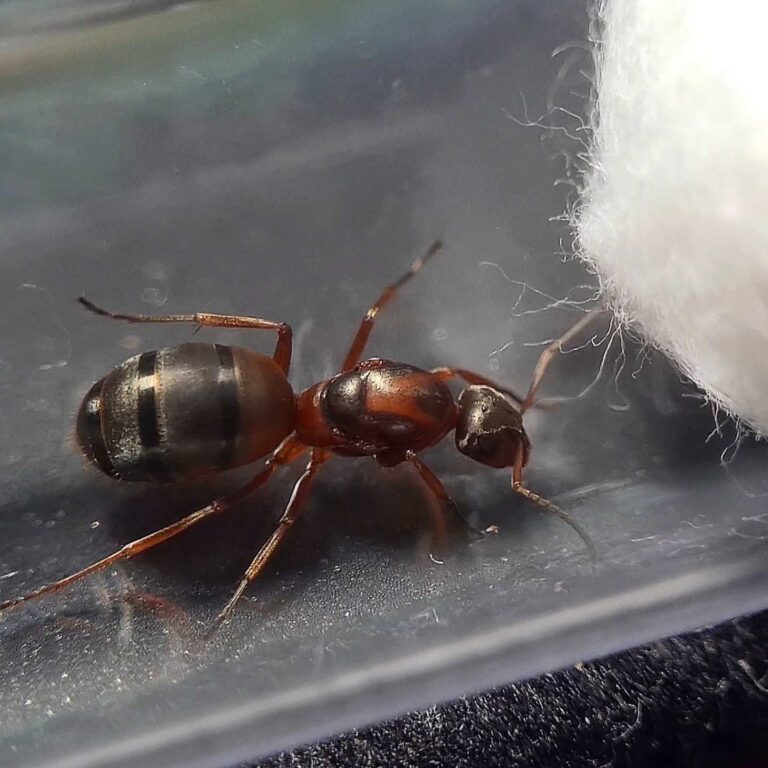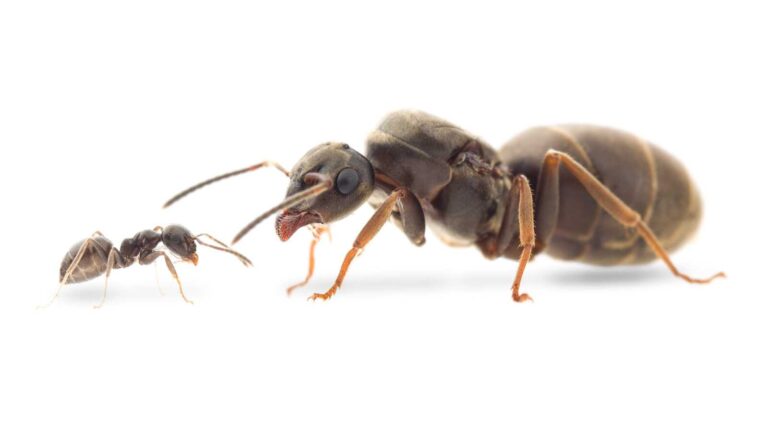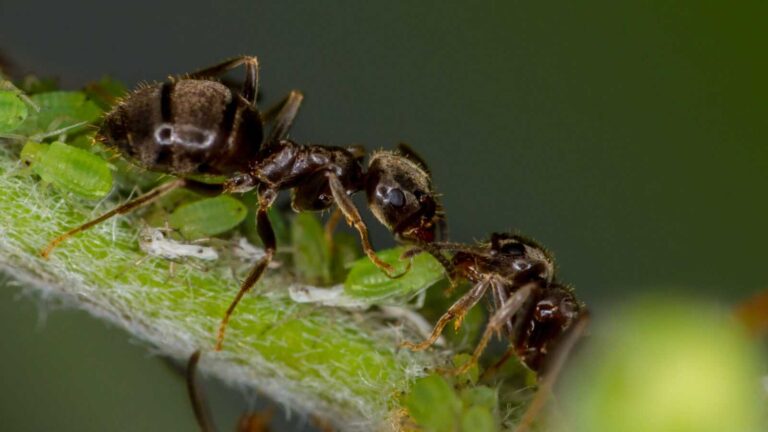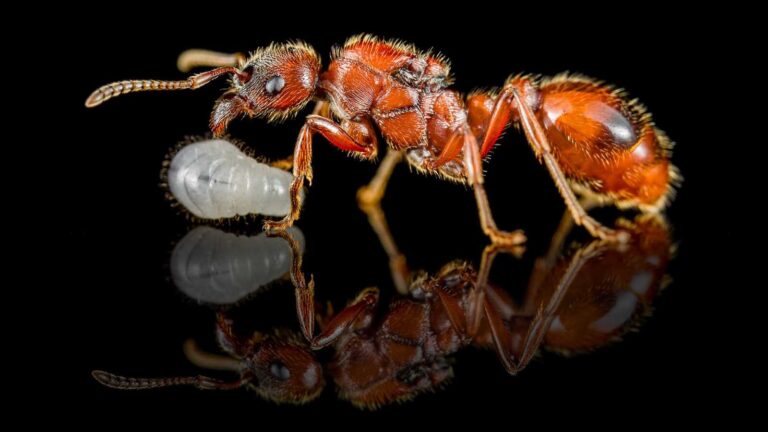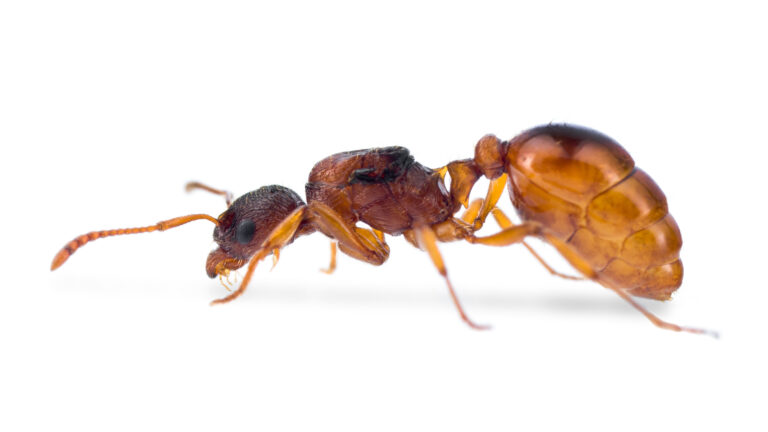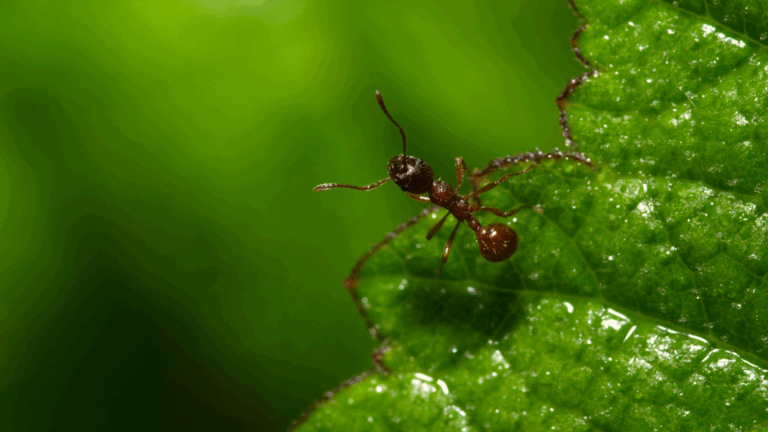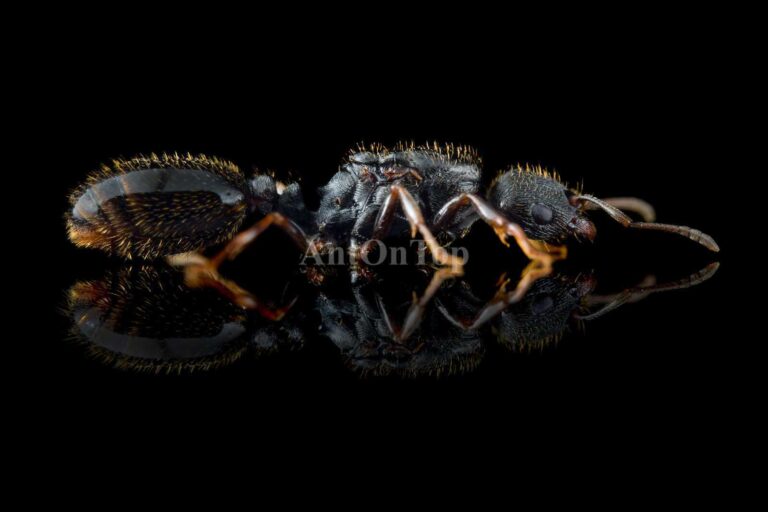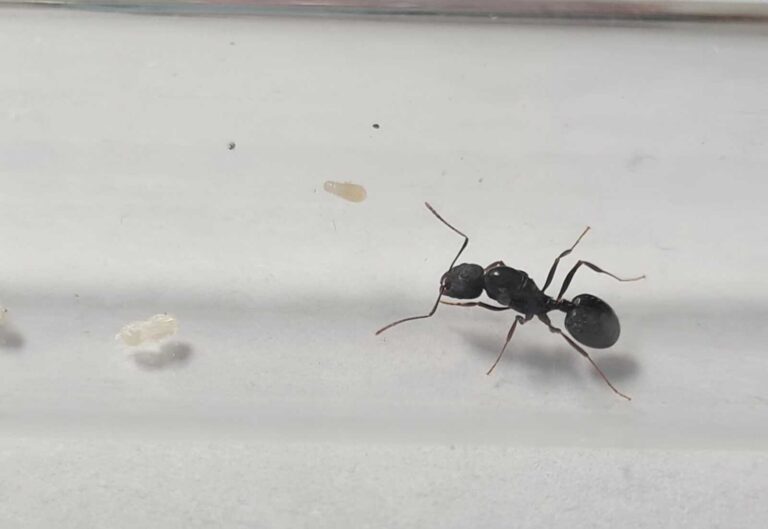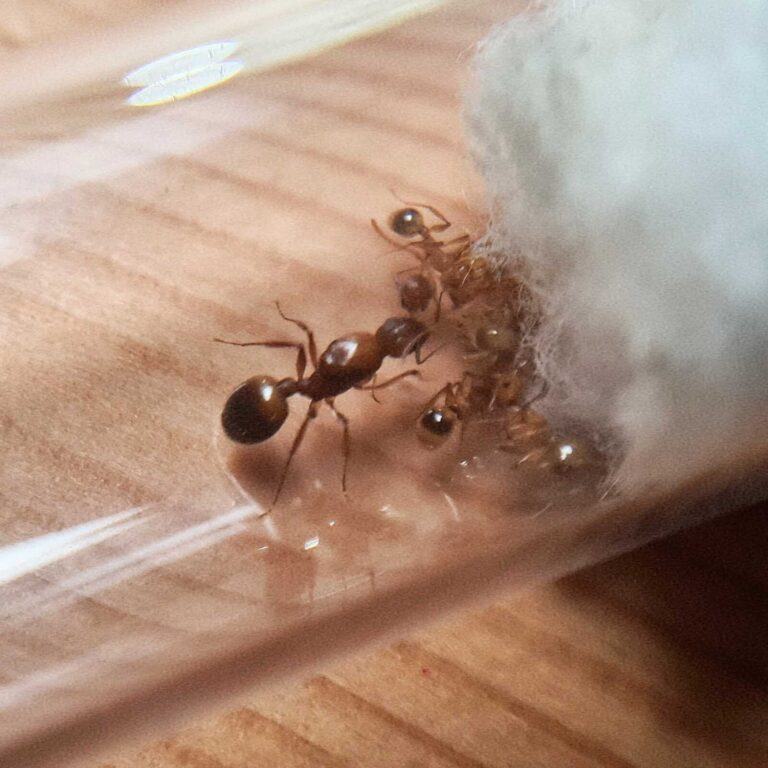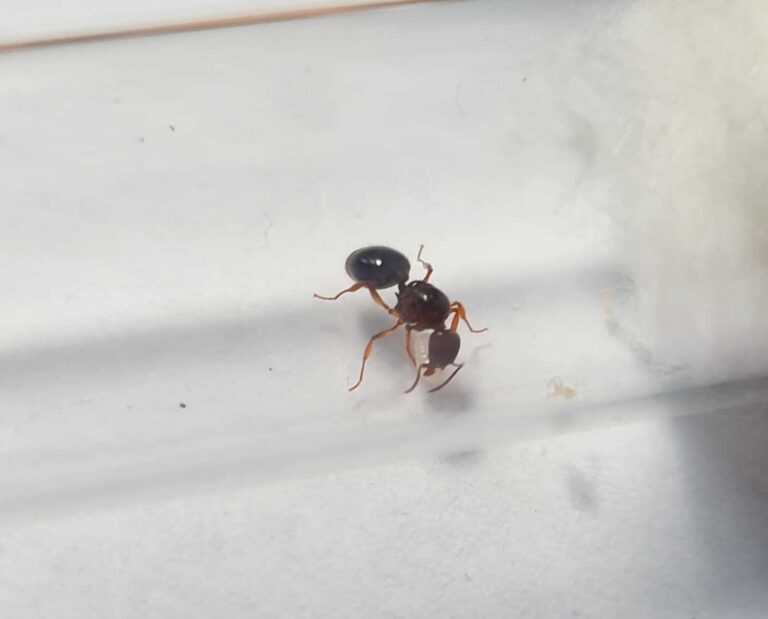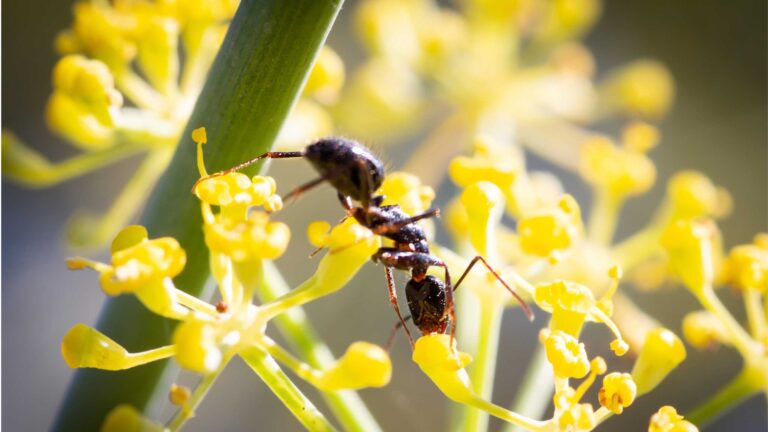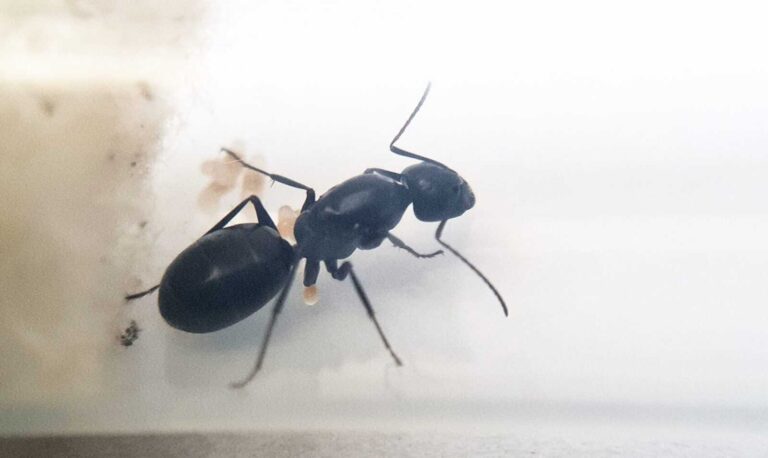Showing 1–20 of 36 results
- Queen 36
- Queen and 1-50 workers 2
- Queen and 1-3 workers 34
- Queen and 4-10 workers 34
- Queen and 11-20 workers 34
- Queen and 21-40 workers 34
- Queen and 41-60 workers 34
- Queen and 61-100 workers 26
- Queen and 51-100 workers 2
- Queen and 101-200 workers 5
- Queen and 201-500 workers 2
- Queen and 501-1000 workers 1
- 2 Queens 4
- 2 Queens and 1-50 workers 1
- 2 Queens and 1-3 workers 3
- 2 Queens and 4-10 workers 3
- 2 Queens and 11-20 workers 3
- 2 Queen and 21-40 workers 3
- 2 Queens and 41-60 workers 3
- 2 Queens and 61-100 workers 1
- 2 Queens and 101-200 workers 1
- 2 Queens and 51-100 workers 1
- 3 Queens 1
- 3 Queens and 1-50 workers 1
- 3 Queens and 51-100 workers 1
- 3 Queens and 101-200 workers 1
Aphaenogaster dulcineae is a monogynous ant species with several thousand workers. They have a medium development speed and their queen measures 6-9 mm while the workers range from 3-5.5 mm. They have a brown top and yellow bottom coloration. Their nutrition includes food insects, syrup, fruits, vegetables, jelly, and cooked chicken without bones.
Camponotus barbaricus is a monogynous ant species with colonies of up to 10,000 workers. The development rate is medium and the size ranges from 6-17mm. They have a glossy black color with a reddish veil. Their nutrition consists of food insects, syrup, fruit, vegetables, jelly, and cookies.
The Camponotus cruentatus is a monogynous ant species with a colony size of up to 10,000 individuals. They have a medium development rate and come in various sizes, with queens measuring around 14-16 mm and workers and majors ranging from 6-14 mm. They have a dark gray-black color with orange segments on their stomach. Their nutrition consists of food insects and syrup.
Camponotus fallax is a monogynous ant species with colonies that can reach up to 300 workers. They have a medium development rate and are characterized by their glossy black color. The queen is 9-12mm in size, while workers and majors range from 6-9mm. They require a diet consisting of food insects, syrup, fruits, vegetables, jelly, and cooked chicken (unsalted).
The Camponotus herculeanus is a monogynous ant species with colony sizes of up to 5000 workers. They have a slow development rate. The queen measures 16-18 mm, workers measure 8-12 mm, and the majors measure 11-15 mm. They have a red-breast and black head and belly. Their nutrition includes food insects, syrup, fruit, vegetables, and jelly.
The Camponotus japonicus is a monogynous ant species with a colony size of up to 5000 workers. They have a medium development rate and are primarily black in color. Their nutrition consists of food insects, syrup, fruits, vegetables, jelly, and cooked chicken without salt. The queen measures 15-18mm while workers range from 6-9mm and majors from 9-14mm.
Camponotus lateralis is a monogynous ant species with a colony size of up to 1000–2000 workers. The development rate of the species is medium. The queen measures 10–12 mm, workers 4–7 mm, and majors 6–9 mm. They have a shiny black head and gaster with a reddish-orange thorax, creating a striking color contrast. Their diet includes food insects, syrup, fruits, vegetables, jelly, and cooked meat.
Camponotus pilicornis is a monogyny ant species with colony sizes of up to 5000 workers. They have a medium development rate. The queen is 14-16mm in size, while workers range from 6-9mm and majors from 10-13mm. They are brown or dark orange in color and feed on food insects, syrup, fruits, vegetables, jelly, and cooked chicken.
Camponotus sylvaticus ants are a fascinating species known for their monogyny colony type and moderate development rate. With queens measuring 14-16 mm and workers ranging from 5-9 mm in size, these ants are a captivating addition to any ant enthusiast’s collection.
Formica fusca is a polygynous ant species with colonies of up to 5000 workers. They have a medium development speed and the queen measures 10-12mm, while workers range from 3-6mm. The ants have a black abdomen and a brown back with black spots. Their nutrition includes insect food, syrup, fruit, vegetables, jelly, and cooked chicken without salt.
Formica rufibarbis is a polygynous ant species with colony sizes of up to 5000 workers. They have a medium development rate and queens measure 8-11mm, while workers measure 4-8mm. The ants have a black abdomen, brown back with black spots. They feed on food insects, syrup, fruit, vegetables, jelly, and cooked chicken.
Lasius niger is a type of ant known for its colony type, size, development rate, size, coloration, nutrition requirements, humidity and temperature preferences, and recommended nests for breeding.
Manica rubida Colony Type: Monogyn Colony Size: Up to 5000 workers Development Speed: medium
Size and Color: Queen: 9-13 mm, Workers: 6-10 mm, Color: red-orange
Myrmica rubra is an aggressive, fast-moving species perfect for experienced antkeepers. Its high colony growth, polygyne structure, and active foraging behavior make it exciting to observe. Best suited for those prepared for regular maintenance and who enjoy a more challenging species with real fire-ant personality.
Tetramorium caespitum, or pavement ants, can be kept as pets by providing a suitable nest. These ants prefer nests with multiple chambers and a substrate that retains moisture well, such as sand or soil. Maintaining proper humidity levels is important for the well-being of the colony.
Aphaenogaster gibbosa is a monogynous ant species with a colony size of about 1000 workers. The development rate is medium. The queen measures 7-8 mm in size, while the workers are 3-4 mm. They have a brown color with yellowish legs. Their nutrition includes food insects, syrup, fruits, vegetables, jelly, and cooked chicken without salt.
Aphaenogaster splendida is a monogynous ant species with several thousand workers. They have a medium development speed and are sized at 6-8mm for queens and 3-4mm for workers. They are yellow-orange in color and their nutrition includes food insects, syrup, fruit, vegetables, jelly, and cooked chicken without salt.
Aphaenogaster subterranea is a species of ant with monogynous colonies of up to 1000 workers. They have a medium development rate and vary in size, with Queens measuring 7-8mm and workers measuring 3-4mm. They are brown in color and their nutrition consists of food insects, syrup, fruits, vegetables, jelly, and cooked chicken without salt.
Camponotus aethiops is a monogynous ant species with a colony size of up to 1000 workers. The development rate is medium. The queen measures 12-13mm, workers measure 4-7mm, and majors measure 8-10mm. They are black in color with slightly red legs and bottom. Their nutrition includes food insects, syrup, fruits, vegetables, jelly, and cooked food.
Camponotus foreli is a black ant species with a monogynous colony type and a colony size of 5,000 workers. The development speed of this ant is very fast. The queen measures 11-13mm, while workers and majors range from 4-10mm in size. The ants can be fed with food insects, syrup, fruit, vegetables, jelly, and cooked chicken without salt.



